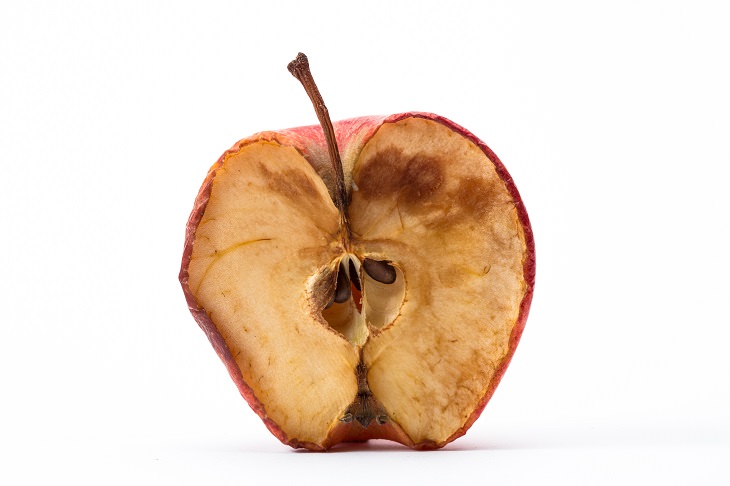
Sometime this month, bags of sliced apples will hit grocery stores in the Midwestern United States for the very first time. Those who buy these apples can leave the slices out for snacking because they have been genetically engineered to prevent their flesh from turning brown when exposed to air.
The “Arctic apple” is one of the first foods to be given a trait that is intended to please consumers rather than farmers, and it joins a small range of genetically modified organisms to be sold as a whole product, not an ingredient.

Since Okanagan Specialty Fruits in Summerland, Canada, planted their first test apples back in 2003, the array of foods modified in labs has expanded to include fish fillets grown from seafood stem cells, mushrooms whose genomes have been edited with CRISPR technology, and meatless burgers made with soya protein produced by recombinant yeast. However, most of these items have not yet reached the market.
Now, many small biotechnology companies that are developing such foods are watching the Arctic apple’s launch, eager to see how consumers will perceive the fruits of their labor. Yinong Yang, a plant pathologist at Pennsylvania State University in University Park, who used CRISPR to engineer a mushroom that resists browning, states that “if the apple sells, it will pave the way for others.” He hopes one day to license his mushroom to commercial growers.
Mary Maxon, who oversees bioscience programs at Lawrence Berkeley National Laboratory in California, agrees. “The apple is not the first GMO that people would eat, but it’s the first one that consumers may value.”
When Okanagan co-founder Neal Carter took over his family’s orchard in 1995, he decided he wanted to create a product that would win over the U.S. snack market. He found his answer in Australia, where researchers at the Commonwealth Scientific and Industrial Research Organization had worked out how to remove a gene encoding an enzyme that causes plant cells to brown when exposed to oxygen. Carter realized that by suppressing the production of this enzyme in apples, he might be able to sell them as snackable slices without the need for preservatives.

He later realized that to be successful, he would need to overcome America’s distrust of GMOs. Okanagan’s subsequent surveys of people in America’s top apple-growing states – New York and Washington – revealed that around 20% were wary of GMOs. However, the company also found that many people changed their minds when told that the apples were engineered to remove browning genes, and then tested for safety.
Mike Seldon, the co-founder of Finless Foods, a firm in New York that is developing fish fillets from fish stem cells, agrees that providing more information helps to win over the buyer. “We’re not going to repeat the mistakes of the GMO industries in the past, and just put foods on the market without public conversation. If we do, you can expect a backlash – and that’s warranted.”
Seldon sees a similarity between his fillets and the Arctic apple: both were created with attributes to please consumers. Finless foods, which has made prototypes of bluefin tuna fillets, hopes that people will be won over by the idea of consuming fish without worrying about overfishing, animal slaughter, or environmental pollution.
However, others state that Okanagan hasn’t gone far enough in telling consumers how its apple was made. The company doesn’t mention GMOs on the apple’s bags; instead the bags have a QR code, which links to online information when scanned by a smartphone. Bill Freese, a science-policy analyst at the Center for Food Safety states that “not everyone has a smartphone, and even if you have one, are you going to check every item with it?” He wants these apples to be clearly labelled as GMOs.
Consumer reaction isn’t the only concern for developers of genetically engineered foods who want to sell their products in the U.S. One huge stumbling block is the U.S. regulatory process, which involves a complicated tangle of federal agencies – and, for many companies, an unclear path forward. U.S. regulators assessed Okanagan’s Arctic apple for five years before approving it for sale, but spent just two years reviewing a non-browning GM potato developed by agricultural firm J. R. Simplot of Boise, Idaho.
Then there is also the case of the CRISPR mushroom. The U.S. Department of Agriculture (USDA) said in 2016 that it would not evaluate the mushroom, which was created by using CRISPR to delete a gene. That seems to clear the fungus’s path to the market. But Yang says that, after Nature’s news team reported on the USDA’s decision, the US Food and Drug Administration contacted him to ask whether they could review the mushroom. He agreed to it as it would give consumers peace of mind.
As far as investors are concerned, regulatory uncertainty may be less of a barrier to the success of engineered foods than customer uncertainty. James Hardiman, a partner at the venture-capital fund Data Collective in San Francisco, California states that companies developing such foods can always build a few extra years into their long-term plans, to account for twists in the regulatory process.
Still, Carter is very optimistic about how his Arctic apple will be received. “We rarely get e-mails saying we are Satan any more. Now we have people asking where they can buy the apples.”
Source: nature
Images: depositphotos